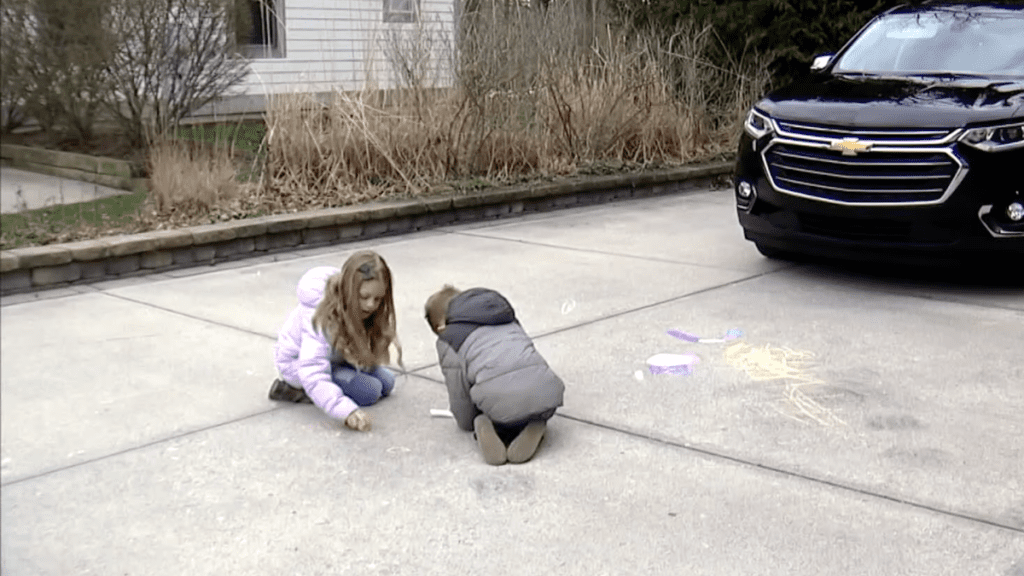U.S. Drivers Run Over 15 Children Every Day In Parking Lots And Driveways

Being a parent comes with a lot of baked-in worry. It’s basically a full-time job to raise a child in a way that gives them the tools they need to eventually become successful adults. Ensuring their safety is obviously paramount to that, though the danger doesn’t always come from outside forces. According to national non-profit Kids and Car Safety, each week 110 U.S. children are hit by slow-moving cars in parking lots and driveways, often hit by their own parents with their own cars.
People Are Relying on ADAS to Do Things it Can’t Do
Children, and especially toddlers, can sneak into the blind zones of your car while it’s moving. From the driver seat there are sections at the back and front of your car that are hidden by the vehicle’s body panels, and they can obstruct your view of a small child walking into your path of travel. Whether you’re in a hurry, adjusting the radio, tapping at your phone, or driving normally, there’s a chance you can hit and injure or even kill a kid.
Since May of 2018 backup cameras have been required by law on all new automobiles sold in the United States, and this tech has proven effective. Backing over children has become a bit less common in the years since. Despite the blind zone at the back of your car typically being the larger and more dangerous one, backup cameras have helped drivers gain enough rear visibility to save some lives. It’s still a big issue, as 50 of those weekly incidents are so-called backovers.
Unfortunately, as “backovers” have declined, the “frontover” has increased, accounting for more than half of all car-on-child incidents. In November of 2022 Connecticut Senator Richard Blumenthal introduced a bill to force the NHTSA to investigate the phenomenon. The STOP Frontovers Act was introduced and referred to committee, though it has not progressed any further during the 463 days since.
Senator Introduces Legislation to Prevent ‘Frontover’ Blind Zone Crashes | NBC4 Washington
Amber Rollins, director of Kids and Car Safety, has placed much of the blame on a propensity for Americans to buy larger vehicles with larger blind zones.
“If you look at the hood, it is tipped downwards so you have a better field of view but now we’ve got these SUVs that are very boxy. They go straight out and then down and that is creating an area that’s bigger where you can’t see small children,” said Rollins.
“Toddlers literally cannot understand danger. They don’t have the cognitive ability. They don’t understand that a parked vehicle might start moving,” continued Rollins.
Many vehicles sold today have 360-degree or “birds-eye view” camera systems. I remember driving a BMW 5-Series with this system in 2009, and a little research tells me it was introduced to the U.S. market with the Infiniti EX35 in 2007. This isn’t new technology, and a few extra cameras aren’t going to dramatically increase the cost of a new car. Kids and Car Safety is pushing for this style of camera to be installed in all new vehicles sold in the U.S. It probably wouldn’t hurt for all new cars to have proximity sensors installed in their bumpers, as well.
For parents with toddlers, it’s probably best to err on the side of caution. Taking an extra minute or two to make sure you know where your kid is before backing out of the driveway is worth the peace of mind. And if you’re walking in a parking lot at the grocery store or something, put the kid in a cart or hold their hand so you know they aren’t darting behind someone’s 6,000-pound kid killer. You can’t rely on other drivers to be attentive enough or even see your child. And you can’t rely on the government regulators to do anything about it, either.
There are many reasons I don’t have kids. This isn’t the only factor, but it’s certainly one of them.



